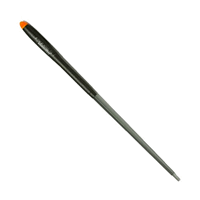THE STICK FLOAT

Possibly the second most popular float in the natural anglers tackle box. The stick float came on the angling scene ‘ late in the late 50s superseding all running water floats, initially for the perfect presentation of also then new, caster bait. This float and bait swept all before it, the development and innovation came from possibly the greatest angling family in history, Benny and Kevin Ashurst.
This float soon became popular all over the country, with reports of matches being won every week. What made this float so exceptional was the way the float worked, giving the most delicate and natural bait presentation available.
Over depth shotted like shirt buttons down the line, held back and released, as it travelled down the swim, the bait would rise when held and sink when released, accounting for fish catches like never before.
The sick float has come a long way since those early days, but the concept and the method still lives on. These days the body shapes are aerodynamic, with new materials for weight and stability.
The sick float come in many clothing. And conditions variably dictate the type to use, down stream winds,
up stream winds, close in work long range fishing, and shotting also play an important part in its presentation.
The basic stick float is made up of a careful blend of balsa and cane, the cane at the bottom supplies the weight for casting and balance, and the balsa at the top supplies the buoyancy and the bite indication.
The balance of the two materials must be spot on; otherwise the float may not work properly. Rising out of the water when held or sinking when released Stick floats are always fished with rubbers attached to the top, middle and bottom, they are shotted down in the water with just a small dot, and with combinations of shots the float becomes a very delicate tool.
Casting is simple; side casting is best for laying out the shots for presentation, allowing the bait to fall slowly. Over head casting is a bit more tricky, but can be achieved with practice, also best for distance fishing (i.e. middle or far bank Expect bite’s to occur on the drop and running through, dragging the shots along the bottom can be a deadly method, so can holding back and slowing up the bait.
Placing shots above the float can reduce a bow in the line with windy conditions, greasing the line above the float makes mending the line very neat without moving the line of float out of position.
